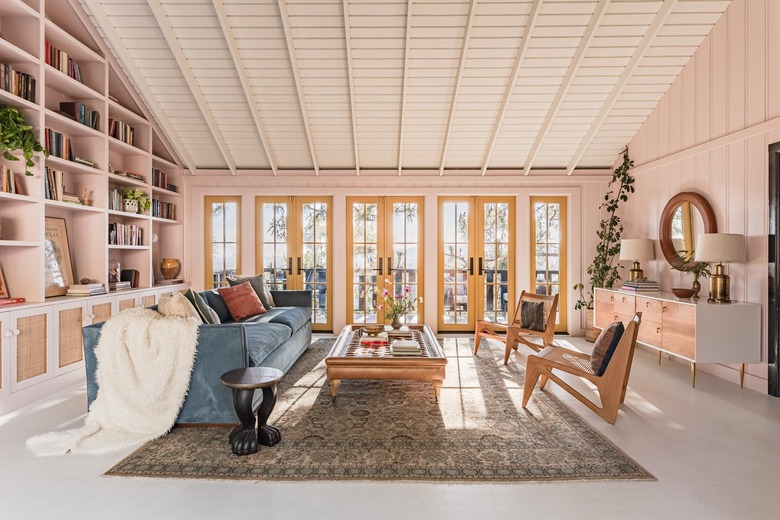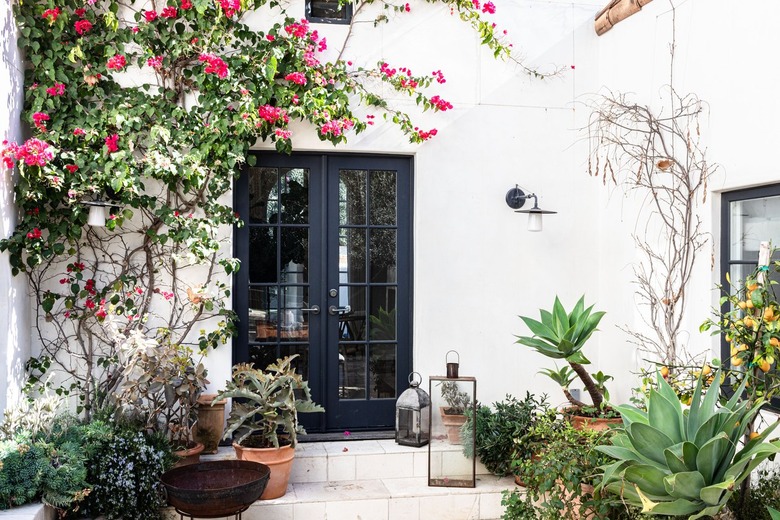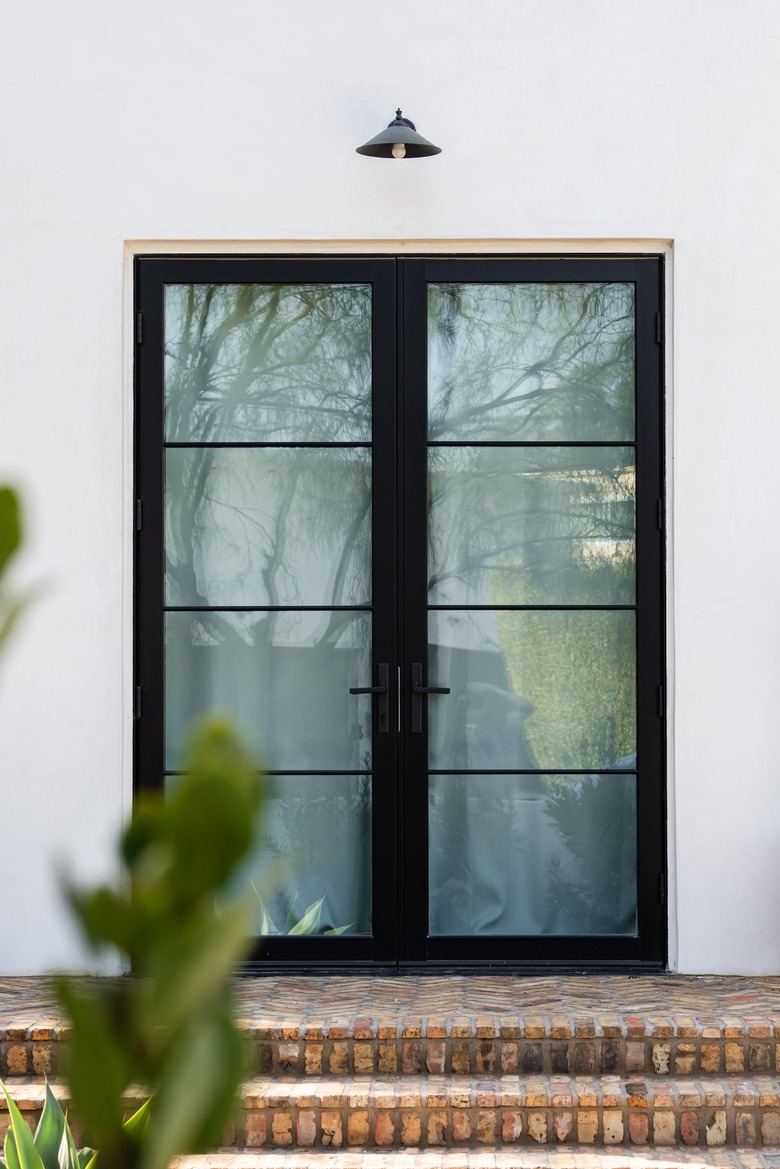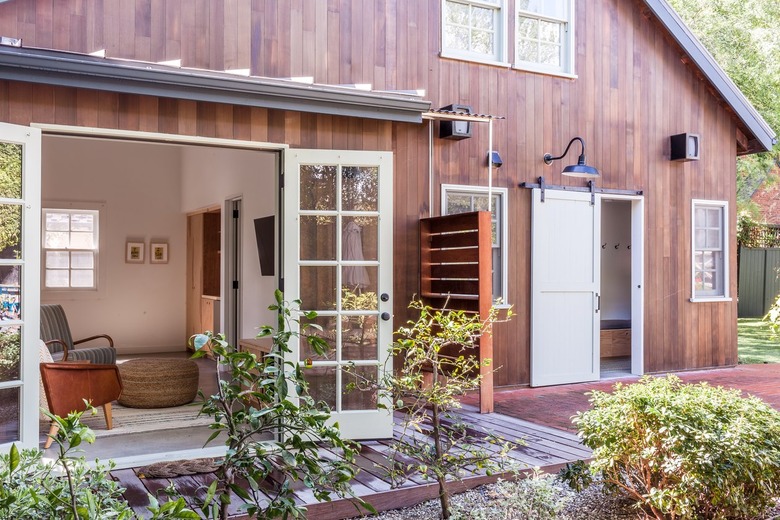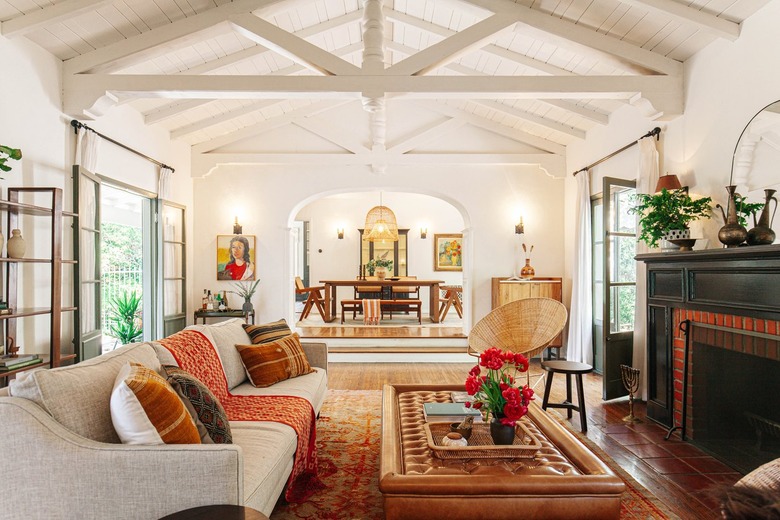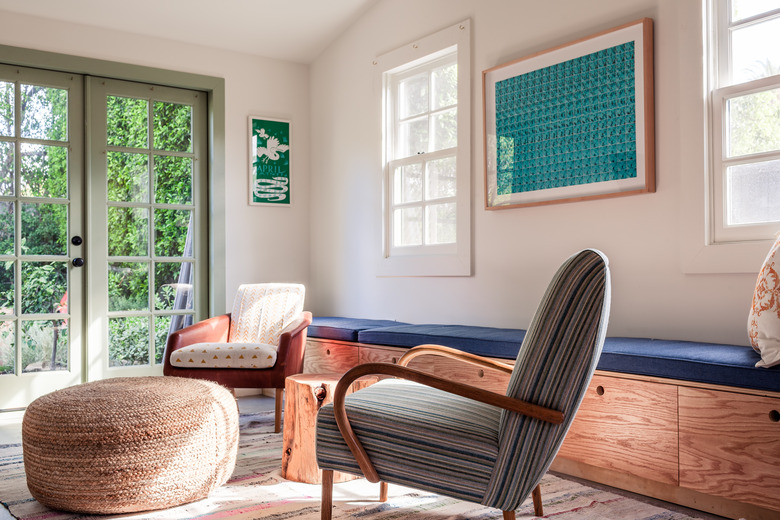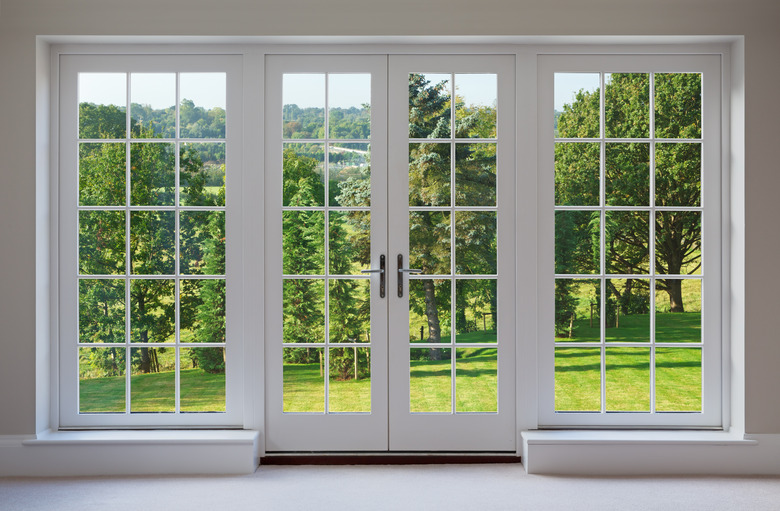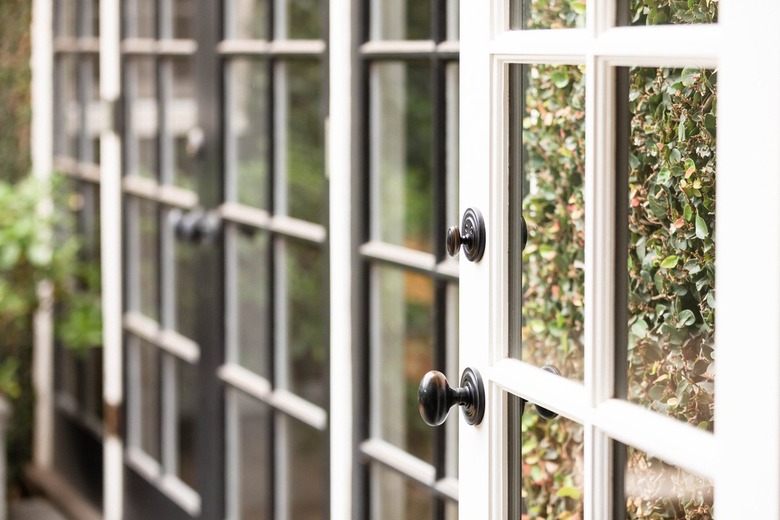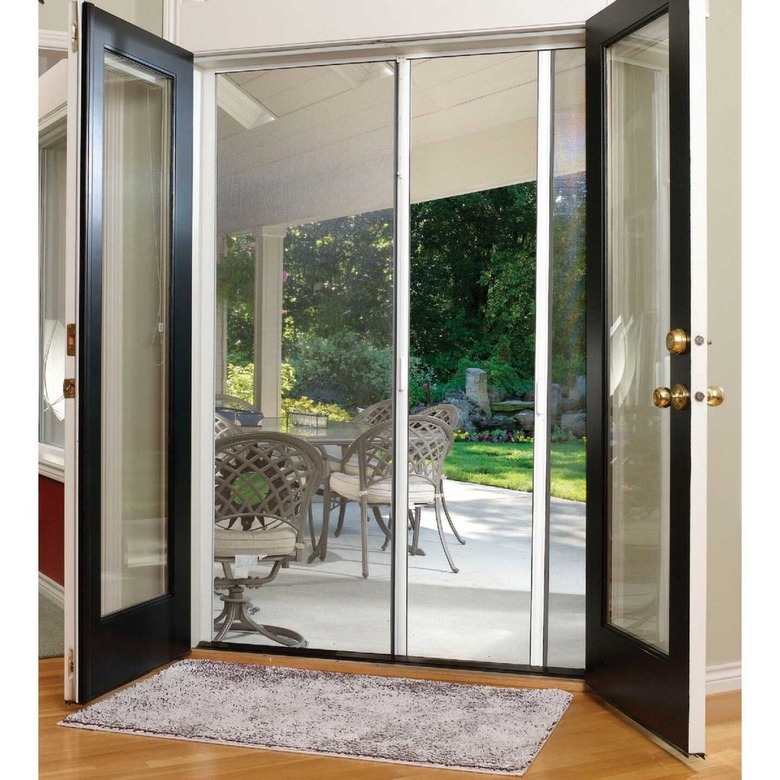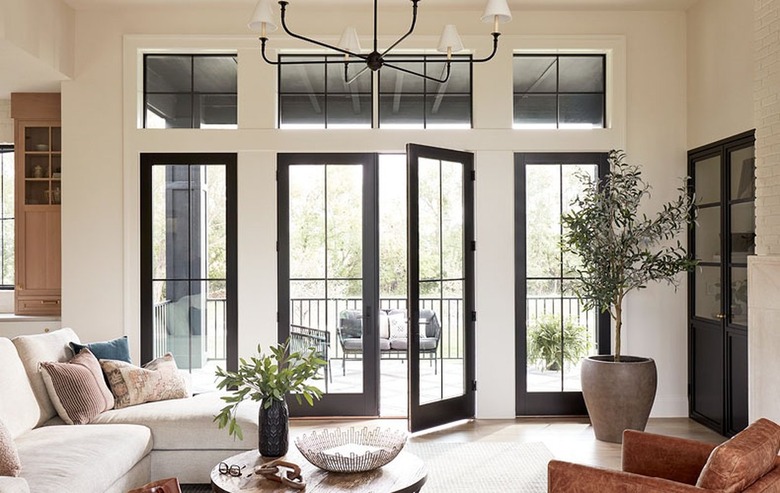11 Important Questions To Ask Before You Buy Exterior French Doors
We may receive a commission on purchases made from links.
Exterior French doors can add large amounts of both natural light and beauty to your home. Originating in France as their name suggests, these hinged doors make it easy to integrate indoor and outdoor living spaces. Before you buy a set, however, there are a few things you should know.
Are French Doors Secure?
Are French Doors Secure?
First, it's time to address one of the main concerns people have about French doors: Are they safe? French doors contain a lot of glass, so this is a good question to ask. Happily, the answer is yes.
First, understand that today's glass panels aren't the same as the ones found in your great-grandmother's house. French door glass is now made of tempered glass, which is much harder to break than plain glass. Much of it is also coated with materials that hold it together if it does sustain damage. If you still have concerns, opt for French doors containing hurricane-rated glass.
Note also that French doors are safe largely for practical reasons as well. A would-be burglar doesn't want to draw attention to themselves, and the sound of breaking glass on patio doors is apt to do just that. Thieves are much more likely to focus on the door lock. Unfortunately, doing so is sometimes easy if the door isn't installed properly. For this reason alone, professional French door installation is best for peace of mind.
What's Included in a French Door Purchase?
What's Included in a French Door Purchase?
French doors come pre-hung in a frame. This setup includes the door and door frame, of course, along with a sill, weatherstripping, and hinges. The rest is often left to you. Many doors have a grille that you can install to visually separate the glass into smaller panes. This grille may be optional and is sometimes enclosed between two sheets of glass when it comes from the factory.
A pre-hung door kit gives you everything you need to get the doors up and in place, but you'll need more to truly finish the job. The installation of the handles, knobs, or door locks may be left to you or the contractor who hangs the door for you.
Interior or Exterior Swing?
Interior or Exterior Swing?
As you've likely gathered at this point, French patio doors can open inward toward your home or outward away from it. A big factor in determining which way you want the door to swing (as well as whether you want a single door or double door) is space. Because they swing open rather than slide, you need to have adequate clearance around the door to open it.
If you have adequate room either way, you can let your taste be your guide. The one exception to this is wind. If you live in a windy area, open-out doors may catch the wind and suffer damage. However, those same doors are better at resisting head-on winds against the closed doors.
What Materials Are Available?
What Materials Are Available?
Like other exterior doors, French doors come in a variety of materials. You can get wood doors if you wish, and the look of natural wood is quite charming. Wood requires maintenance, however, and will need to be painted or sealed every few years for protection from the elements and to prevent rot. Some homeowners opt for clad doors that have a layer of aluminum on the exterior for better protection.
Fiberglass is also an option and requires no maintenance. Fiberglass doors are strong and durable, often featuring a powder coat paint finish that lasts for decades without fading. Steel is another durable option. Fiberglass and steel can both copy the look of wood and other materials, and both come in a wide array of colors. Steel may need occasional painting, whereas fiberglass is truly maintenance-free.
What Styles Are Available?
What Styles Are Available?
When you start shopping for French doors, have no fear about finding a style that will match your home or your taste. As is true of other exterior doors, you'll find French doors in many styles, including contemporary, farmhouse, craftsman, and Victorian. If the perfect fit does somehow manage to elude you, know that you can have custom doors made to fit your home's style just right. Custom doors will, however, cost you more.
What Is the Energy Performance?
What Is the Energy Performance?
Today's French doors are far better insulators than those of the past. Some of this is due to improvements in the doors themselves. Doors now have better-quality seals and frames made of materials that insulate better. French doors also have a lot of glass, and they have been improved as well through double-paned glass, triple-paned glass, and additional glazing.
Door makers also use a low-E coating on windows. Made of tiny metallic particles, this coating reflects heat, keeping it outside or inside depending on your climate. You can also opt for argon-filled window panes. Heat has a harder time transferring through argon than it does air, so argon-filled windows help keep heat where it belongs rather than letting it transfer through the window. A similar gas called krypton is sometimes used in place of argon for the same reason.
Some door manufacturers further improve performance by adding foam insulation or insulating layers to their doors. As a general rule, outward-swinging French doors tend to insulate better than those that open inward. That's because wind pushing in on outward-swinging doors is ultimately pushing them closed rather than trying to force them open. Fortunately, you don't have to read up on door materials and try to determine which doors are the most energy-efficient on the market. The label on the door will tell you.
First, look for the U-factor on the tag. The lower the number, the better the door at resisting heat transfer to or from the outdoors. Next, consider the solar heat gain coefficient (SHGC) measurement. This tells you how well a door blocks solar heat. You want a low SHGC if your area requires cooling more than heating and a higher SHGC if heating your home is more important.
If looking at all these numbers feels a little overwhelming, just look for the U.S. Department of Energy's ENERGY STAR logo. Products bearing this star meet or exceed the Department of Energy's standards for energy performance.
What Hardware Do French Doors Need?
What Hardware Do French Doors Need?
You'll need to choose doorknobs and locks for your French doors, and with so many choices, doing so can be a lot of fun. For maximum security, choose deadbolt locks and install them at the top, middle, and bottom of the door.
When selecting deadbolts, it's best to choose those that open with a key from both the interior and exterior, called double-cylinder locks. This is more secure than a thumb switch that someone could easily turn if he successfully broke a pane of glass. Note, however, that for fire safety reasons, building codes in some areas require a thumb-turn knob on the inside of the door.
As far as doorknobs go, you can choose traditional knobs, levers, or pull handles on your door. For a unique and rustic twist, you can also consider cremone bolts. This unique hardware features a doorknob attached to a vertical bar. This bar latches into a slot at the top of the door. When the knob is turned, the bar moves with it and pulls the latch out of the slot.
To Grille or Not to Grille?
To Grille or Not to Grille?
It's very rare for modern French doors to consist of small individual panes of glass. Instead, most manufacturers use a solid pane of glass and then add a grille to make the door appear to contain several smaller panes. Whether or not you opt for a grille is a matter of taste. You can opt for a grille on just the interior or exterior of the window or have a grille on both sides.
If you do want a grille, consider how often you'll clean the windows. Grilles make it harder to do so, as you have to clean around them. The best way to get a grille, if desired, is to opt for doors that place the grille inside the glass, sandwiching it between two panes. The next-best option is a removable grille you can take off for cleaning. This way, you can still get the aesthetic you want but have a door that's much easier to clean.
How Do I Make French Doors More Private?
How Do I Make French Doors More Private?
French doors provide a beautifully unobstructed view of the outdoors, but that view works both ways. It will be just as easy for others to see into your doors as it is for you to see out, especially at night when the lights are on inside. If you live in a heavily wooded or remote area, this may not be a concern. You may feel differently, however, if your French doors look out over your neighbor's yard.
To add privacy, you can add a sheer curtain to your French doors, securing it at both the top and bottom of the door. This lets in plenty of light while adding some privacy. You can also hang blinds on the doors. Frosted glass and traditional curtains are also an option. As long as you like the look, your options for privacy coverings are quite extensive. Some doors even come with built-in blinds.
Can I Add a Screen Door?
Can I Add a Screen Door?
Opening your French doors on a nice breezy day can let a lot of fresh air into your home. There are, however, insects you likely don't want coming in along with that air. Be aware that you can purchase French doors with screen doors. Some are more traditional screens, while others roll up and out of sight so you don't need to store screens separately over the winter months.
Where Can I Buy French Doors?
Where Can I Buy French Doors?
Thanks to the internet, you can order French doors from a wide variety of retailers — like Wayfair, Home Depot, and Pella. It's best to have the doors installed professionally, however, so choose someone who can offer local service even if the doors themselves ship from afar. It's also a good idea to have that local serviceperson measure your door opening for you to make sure you get the right size of door.
If you want to see and touch the doors in person before you buy them, try to find a high-end lumberyard or window and door specialist near you. Hardware and home improvement stores usually have French doors, but the selection may be limited.
